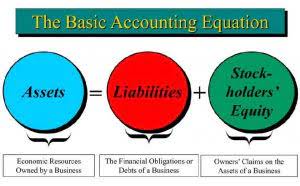
LLCs are popular with small business owners because they allow for a simpler and more flexible ownership and management structure than a corporation. By default, a one-owner (or “member”) LLC is taxed like a sole proprietorship, and a multi-member LLC is taxed like a partnership. Either way, members are considered self-employed and will pay Medicare and Social Security (or “self-employment”) taxes of 15.3% (up to federal limits) as well as personal income tax on their share of company profits. Business owners can make themselves a true “family” business by providing jobs for their children.

What is a reasonable salary for S corp owners?
- Similar to the alternative minimum tax that applies to mostly wealthier individuals, the corporate AMT seeks to ensure that large corporations can’t use tax loopholes and exceptions avoid paying little or no taxes on extensive profits.
- QuickBooks gives S corps peace of mind with accurate payroll and tax penalty protection.
- By the way, you may very well conclude that a $40,000 annual salary is appropriate.
- Our boutique payroll service is uniquely qualified to address the needs of companies that seek solutions that can free them up to handle their business operations.
- An S corp (or S corporation) is a business structure that is permitted under the tax code to pass its taxable income, credits, deductions, and losses directly to its shareholders.
With a $10,000 quarterly payroll, you don’t need to make next-day or next-week deposits of payroll taxes you’ve withheld from employee payroll checks. Under IRC § 223, certain individuals are eligible to take a deduction for amounts paid in cash by or on behalf of such individual to a health savings account (HSA), which is subject to rules similar to individual retirement arrangements. Individuals who have high deductible health plan (HDHP) coverage and no other disqualifying health coverage may contribute to an HSA. Individuals who are covered by permitted insurance (defined under IRC § 223(c)(3)) or certain disregarded coverage (defined under IRC § 223(c)(1)(B)), in addition to HDHP coverage, may remain eligible to contribute to an HSA. For 2022, the HSA contribution is limited to $3,650 for single employees and $7,300 for employees with a family.
- Due to some of the preferable tax benefits of an S-Corp, many entrepreneurs find S-Corps an appealing way to structure their business.
- The business must also prepare and distribute Form W-2, Wage and Tax Statement, to all shareholder-employees by January 31.
- By default, a one-owner (or “member”) LLC is taxed like a sole proprietorship, and a multi-member LLC is taxed like a partnership.
- Your S-corporation must also fit strict requirements for the shareholders (or members, in the case of an LLC) who own your business.
- Or you can write several checks over the course of the quarter that total $8,485.
- You’ll also need to record your payroll transactions into your accounting system.
Nonpayroll wages for S Corps
And if you operate in a state like this, you may only need to prepare and file the federal 941 tax returns over the course of a year. With the passage of the 21st Century Cures Act in 2016, a small employer can, beginning in 2017, establish a Qualified Small Employer Health Reimbursement Arrangement. Described in IRC § 9831(d), a QSEHRA is an arrangement that a small business uses to reimburse its employees’ qualified medical expenses.
Chart 2 – S Corporation Shareholders
- Most importantly, you must have no more than 100 shareholders to qualify as an S-corporation.
- Like LLCs, eligible S corps can take the QBI deduction (Section 199A), which can amount to as much as 20% of a business’s total taxable income and can be taken in addition to standard and itemized deductions.
- Its owners cannot be held personally or financially liable for claims by creditors or against the company.
- Unlike a traditional corporation, because an S-corporation is a pass-through entity, the information on your S-corp tax return will be more informational.
- Julia Kagan is a financial/consumer journalist and former senior editor, personal finance, of Investopedia.
They carry the tax advantages of partnerships while providing the limited liability protections of corporations. Sort of a “corporate lite” structure, they are easy to establish and simpler to maintain than regular C corporations. Any profit you make above your regular payroll can be transferred to your account similarly to an LLC, but instead of a member’s draw that’s subject to self-employment tax, it’s a https://www.bookstime.com/ distribution that’s only subject to your regular income tax. Many S-Corp shareholders perform a double function as shareholder-employees of the S-Corp. As a result, S-Corp payroll needs to incorporate reliable solutions for managing shareholder-employee payroll. A guide for business owners answering commonly asked questions about taxation of S corporations and how to reduce taxes as a pass-through entity.

S-Corp shareholder-employees typically pay themselves via salary and distributions. The salary is required if a shareholder performs anything more than minor or occasional services for the company. As the business grows, shareholder-employees must earn a salary comparable to what other businesses pay employees for the same type of work. IRS Form 1120-S is used to report income, losses, credits, S Corp Payroll and deductions, as well as employee wages, officer compensation, and any other information related to business income and expenses. Filing Form 1120-S automatically generates a Schedule K-1 form for each individual shareholder/partner. The S corp must then supply a completed Schedule K-1 form to each individual shareholder indicating their portion of any income, losses, credits, or deductions.
What Is an S Corp? Definition, Taxes, and How to File

- Electing S-corp tax status for your LLC or corporation can be fairly simple.
- And, file Form W-3, Transmittal of Wage and Tax Statements, to the Social Security Administration (SSA) by January 31 with copies of all Forms W-2.
- As a reminder, Social Security is 6.2% of an employee’s gross taxable wages paid by both the employer and employee.
- If through payroll withholding you’ll only pay $3,000, you’ll want to pay another $3,000 annually, or $750 a quarter, in quarterly estimated tax payments.